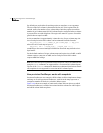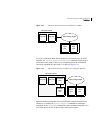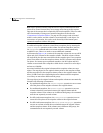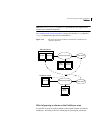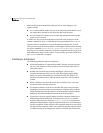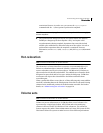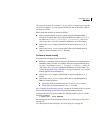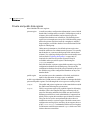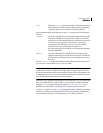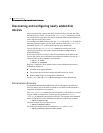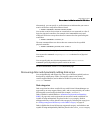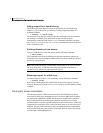
78 Administering disks
Disk devices
and /dev/rdisk directories. To maintain backward compatibility, HP-UX also
creates legacy devices in the /dev/dsk and /dev/rdsk directories.
VxVM recreates disk devices for all paths in the operating system’s hardware
device tree as metadevices (DMP nodes) in the /dev/vx/dmp and
/dev/vx/rdmp directories. The dynamic multipathing (DMP) feature of VxVM
uses a DMP node to represent a disk that can be accessed by one or more
physical paths, perhaps via different controllers. The number of access paths
that are available depends on whether the disk is a single disk, or is part of a
multiported disk array that is connected to a system. DMP nodes are not used by
the native multipathing feature of HP-UX.
If a legacy device special file does not exist for the path to a LUN, DMP generates
the DMP subpath name using the c#t#d# format, where the controller number
in c# is set to 512 plus the instance number of the target path to which the LUN
path belongs, the target is set to t0, and the device number in d# is set to the
instance number of the LUN path. As the controller number is greater than 512,
DMP subpath names that are generated in this way do not conflict with any
legacy device names provided by the operating system. If a DMP subpath name
has a controller number that is greater than 512, this implies that the operating
system does not provide a legacy device special file for the device.
You can use the vxdisk utility to display the paths that are subsumed by a DMP
metadevice, and to display the status of each path (for example, whether it is
enabled or disabled).
For more information, see “Administering dynamic multipathing (DMP)” on
page 125.
Device names may also be remapped as enclosure-based names as described in
the following section.
Disk device naming in VxVM
There are two different methods of naming disk devices:
■ Operating system-based naming
■ Enclosure-based naming
Operating system-based naming
Under operating system-based naming, all disk devices except fabric mode disks
are displayed either using the legacy c#t#d# format or the persistent disk##
format. By default, VxVM commands display the names of these devices in the
legacy format as these correspond to the names of the metanodes that are
created by DMP.



